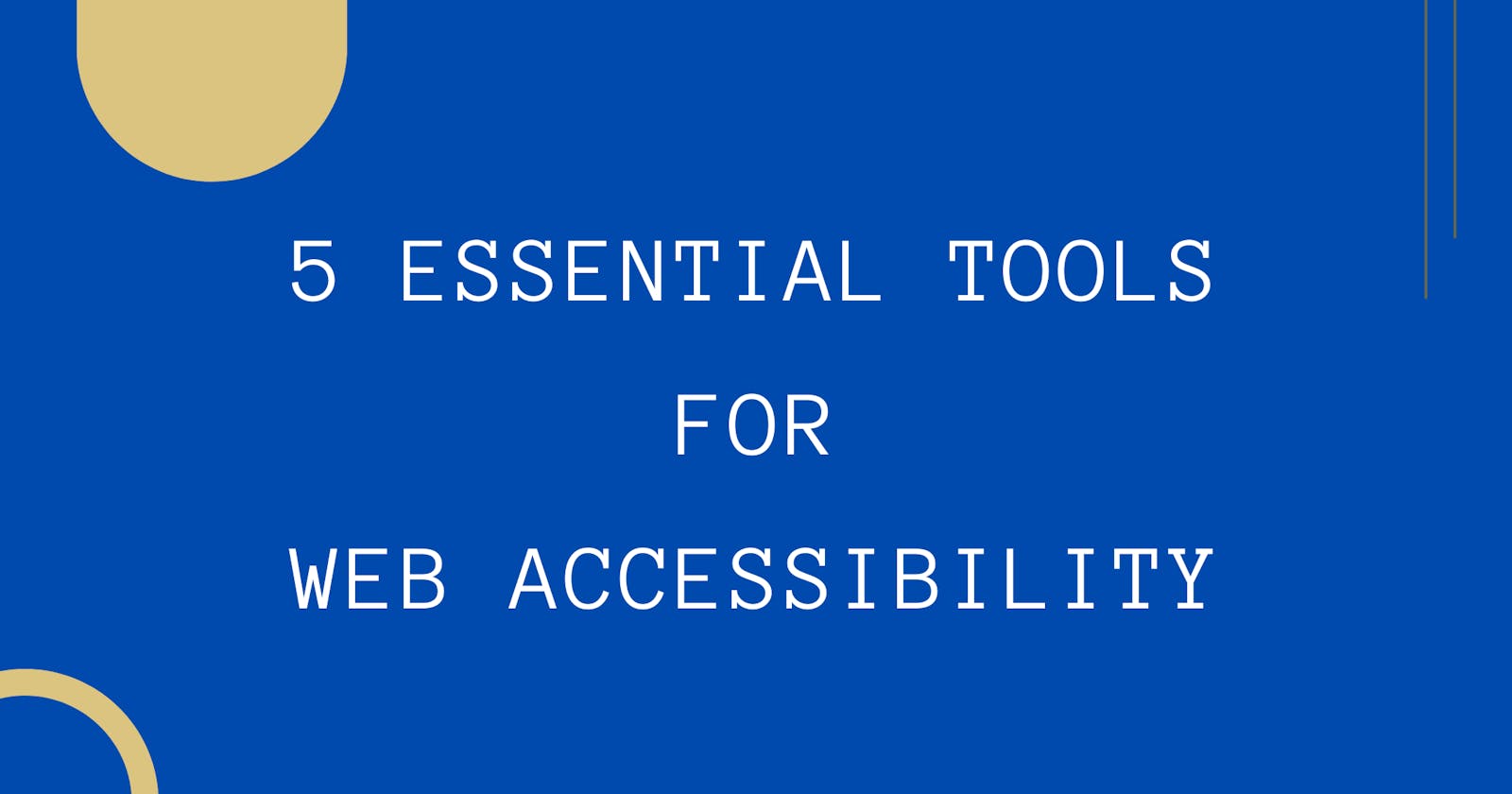Introduction
Web accessibility is crucial for ensuring that all users, including people with disabilities, can access and interact with web content effectively. Fortunately, there are numerous tools available to help developers assess and improve the accessibility of their websites and web applications. In this article, you'll learn about five essential web accessibility tools that every developer should be familiar with.
Axe
Axe is a widely used accessibility testing tool developed by Deque Systems. It integrates seamlessly with popular web development tools such as Chrome DevTools and Firefox Developer Tools, making it convenient for developers to identify accessibility issues during development.
It performs automated accessibility scans on web pages and provides detailed reports highlighting violations of accessibility standards, along with suggestions for improvement.
WAVE
The WAVE evaluation tool is another popular accessibility testing tool that provides comprehensive evaluations of web content for accessibility issues. Developed by WebAIM (Web Accessibility in Mind), Wave is available as a browser extension for Chrome and Firefox as well as a web-based tool.
This tool evaluates web pages against the Web Content Accessibility Guidelines (WCAG) criteria and provides visual feedback directly within the page, making it easy for developers to identify and understand accessibility issues. Wave also offers detailed reports with explanations and suggestions for fixing accessibility problems.
Lighthouse
Lighthouse is an open-source tool developed by Google that helps developers improve the quality of their web pages across various dimensions, including performance, accessibility, best practices, and Search Engine Optimization (SEO).
Integrated into Chrome DevTools, Lighthouse performs automated audits of web pages and generates detailed reports with actionable insights for optimization. Its accessibility audits cover a wide range of accessibility criteria, including semantic HTML, focus management, color contrast, and ARIA usage.
Color Contrast Analyzers
Color contrast is essential for ensuring that text content is readable for users with low vision or color blindness. Color contrast analyzers help developers assess the contrast ratio between text and its background color to ensure compliance with accessibility standards.
There are various color contrast analyzers available, including browser extensions such as ColorZilla and WebAIM's Color Contrast Checker. These tools allow developers to input foreground and background colors and instantly determine whether the color combination meets the required contrast ratio according to WCAG guidelines.
Screen Readers
Screen readers are assistive technologies that convert on-screen content into synthesized speech or braille output, enabling users with visual impairments to access and navigate digital content. While not strictly a developer tool, understanding how screen readers interact with web content is essential for building accessible websites.
Developers should test their websites with screen readers to ensure that all content is perceivable and navigable using assistive technologies. Popular screen readers include JAWS, NVDA, and VoiceOver (built into macOS and iOS devices). By testing with screen readers, developers can gain insights into how users with visual impairments experience their websites and identify areas for improvement in terms of navigation, content structure, and interactive elements.
Conclusion
Web accessibility tools play a crucial role in helping developers create websites and web applications that are inclusive and accessible to all users. By utilizing tools like Axe, Wave Evaluation Tool, Lighthouse, color contrast analyzers, and screen readers, developers can identify accessibility issues, understand their impact on users with disabilities, and implement necessary improvements to ensure a seamless and inclusive user experience.
Prioritizing web accessibility not only benefits users with disabilities but also contributes to the overall usability and quality of web content. As developers, let's leverage these essential accessibility tools to build a web that is accessible to everyone.
